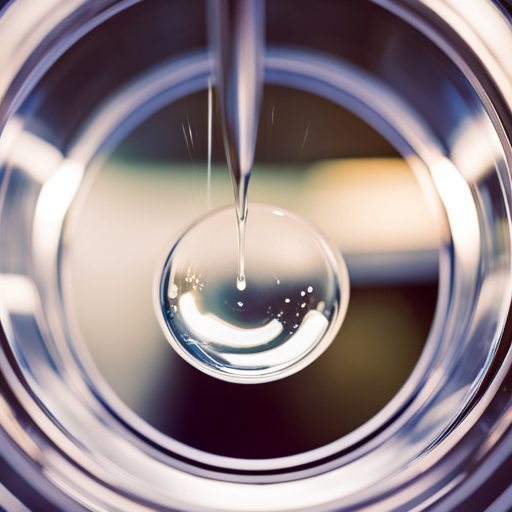Are you a purist when it comes to drinking water? Reverse osmosis (RO) systems are often the go-to choice for consumers seeking the purest drinking water possible. However, did you know that the effectiveness of your RO system relies heavily on the quality and maintenance of the RO membrane?
Neglecting to flush and maintain your RO membrane can result in costly repairs and a decrease in water quality. In this article titled ‘Flush it Out: RO Membrane Maintenance,’ you will learn about the importance of flushing and maintaining your RO membrane.
You will also discover signs that indicate the need for more frequent flushing, advanced cleaning methods, and the consequences of neglecting membrane maintenance. By taking the time to properly maintain your RO membrane, you can ensure that your drinking water remains pure and your system functions at its best.
So, let’s dive in and learn how to keep your RO membrane in tip-top shape!
Key Takeaways
– Maintenance of RO membrane is crucial for effectiveness of RO systems used for pure drinking water.
– Regular flushing after every use is recommended to prevent mold and contaminant buildup, which can result in costly repairs and decreased water quality.
– Monitoring the membrane and environment is crucial in determining appropriate flushing frequency to ensure longevity and functionality of the system.
– Advanced cleaning methods such as physical and chemical cleaning can help maintain system health, but improper cleaning can lead to the growth of fungus and microorganisms, which can permanently damage the membrane.
Importance of Flushing
You need to flush your RO membrane regularly to maintain its functionality and prevent the buildup of mold or contaminants. Not flushing your RO membrane can lead to decreased permeate flow/pressure, increased salt permeability, increased pressure difference, and increased temperature correction.
Flushing the membrane at the end of the day is recommended to elongate its lifespan, but flushing it after every use is even better. The benefits of regular flushing include a longer lifespan for the membrane, improved water quality, and reduced costs for replacements or repairs.
On the other hand, the risks of not flushing your RO membrane regularly include reduced water quality, increased risk of contamination, and decreased lifespan for the membrane. By flushing your RO membrane regularly, you can ensure that it remains in good condition and continues to provide you with clean and safe drinking water.
Frequency and Quality
To ensure the longevity and functionality of your reverse osmosis system, it is important to regularly clean and maintain the components, including paying attention to the frequency and quality of the flushing process. Monitoring the RO membrane is crucial in determining the appropriate flushing frequency. The environment in which the system is located can also have an impact on maintenance needs.
Here is a table to help you determine the appropriate flushing frequency for your RO membrane:
| Signs of Needing More Frequent Flushing | Frequency of Flushing |
|---|---|
| Increased salt permeability | Once per week |
| Decreased permeate flow/pressure | Twice per week |
| Increased pressure difference | Three times per week |
| Increased temperature correction | Four times per week |
It is important to note that these are general guidelines and may need to be adjusted based on the specific conditions of your system. Additionally, the quality of the flushing process is just as important as the frequency. Ensuring that the flushing process is thorough and effective will help prevent the buildup of contaminants and prolong the lifespan of the membrane.
Advanced Cleaning Methods
When it comes to keeping your reverse osmosis system clean and functioning properly, it’s important to be aware of advanced cleaning methods that can help maintain the health of your system.
One option is physical cleaning, which involves using a specialized tool to scrub the surface of the membrane. This method is effective for removing buildup and can be done regularly to prevent contamination. However, physical cleaning may not be sufficient in cases where the membrane is heavily contaminated or fouled.
Another option is chemical cleaning. This method is used when physical cleaning is not enough or when the membrane is heavily contaminated. It involves mixing a cleaning solution and adding it to the system, then circulating the solution through the membrane for a period of time before rinsing and soaking the membrane. While chemical cleaning is effective, it should only be used when necessary as it can be harsh on the membrane.
If performed correctly, contaminated membranes can be reused after cleaning. However, it’s important to note that improper cleaning can lead to the growth of fungus and microorganisms, which can permanently damage the membrane.
Conclusion
Congratulations! You now know the importance of flushing and maintaining your RO membrane. By regularly flushing your membrane, you can ensure that it stays clean and functional, which will ultimately lead to better quality drinking water.
Remember to pay attention to signs that indicate the need for more frequent flushing, such as decreased water flow or increased pressure. If you do need to clean your membrane, there are advanced cleaning methods available that can help you get the job done.
Neglecting membrane maintenance can lead to a host of problems, including decreased water quality, increased energy costs, and even membrane failure. By keeping your membrane in good condition, you can avoid these consequences and enjoy clean, healthy drinking water for years to come.
So go ahead, flush it out and keep your RO membrane in tip-top shape!




